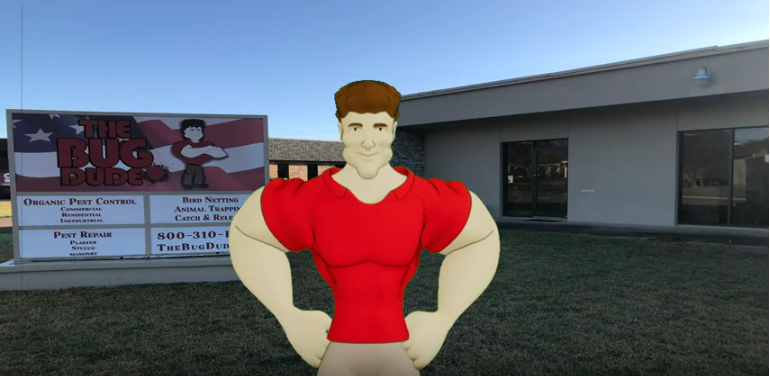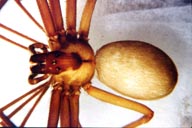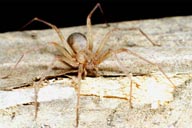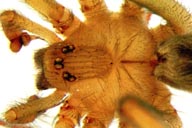One can readily learn how to identify recluse spiders with less than a minute’s training. Whereas most U.S. spiders have 8 eyes, typically arranged in 2 rows of 4, the recluse spiders have 6 eyes arranged in pairs (dyads) with one anterior dyad and 2 lateral dyads (Fig. 1). All 13 species of U.S. recluses (11 native, 2 non-native) share the same eye pattern. In many publications, the violin pattern on the cephalothorax (the first body part to which the legs attach) is mentioned as a diagnostic characteristic (Fig 2). Although it is quite consistent in adult brown recluses (although it can fade in preserved specimens), many western U.S. recluse species and some young brown recluses have virtually no contrasting pigmentation in the violin region (Fig. 3, 4). In addition, recluse spiders have abdomens that are devoid of coloration pattern and their legs are covered with fine hairs but lack thickened spines.
Misidentification of spiders as brown recluses is not uncommon both in the lay and medical communities. Many of these mistaken spiders are similar in only one trait with actual recluse spiders, with some only sharing the characteristics of brown color and eight legs.








